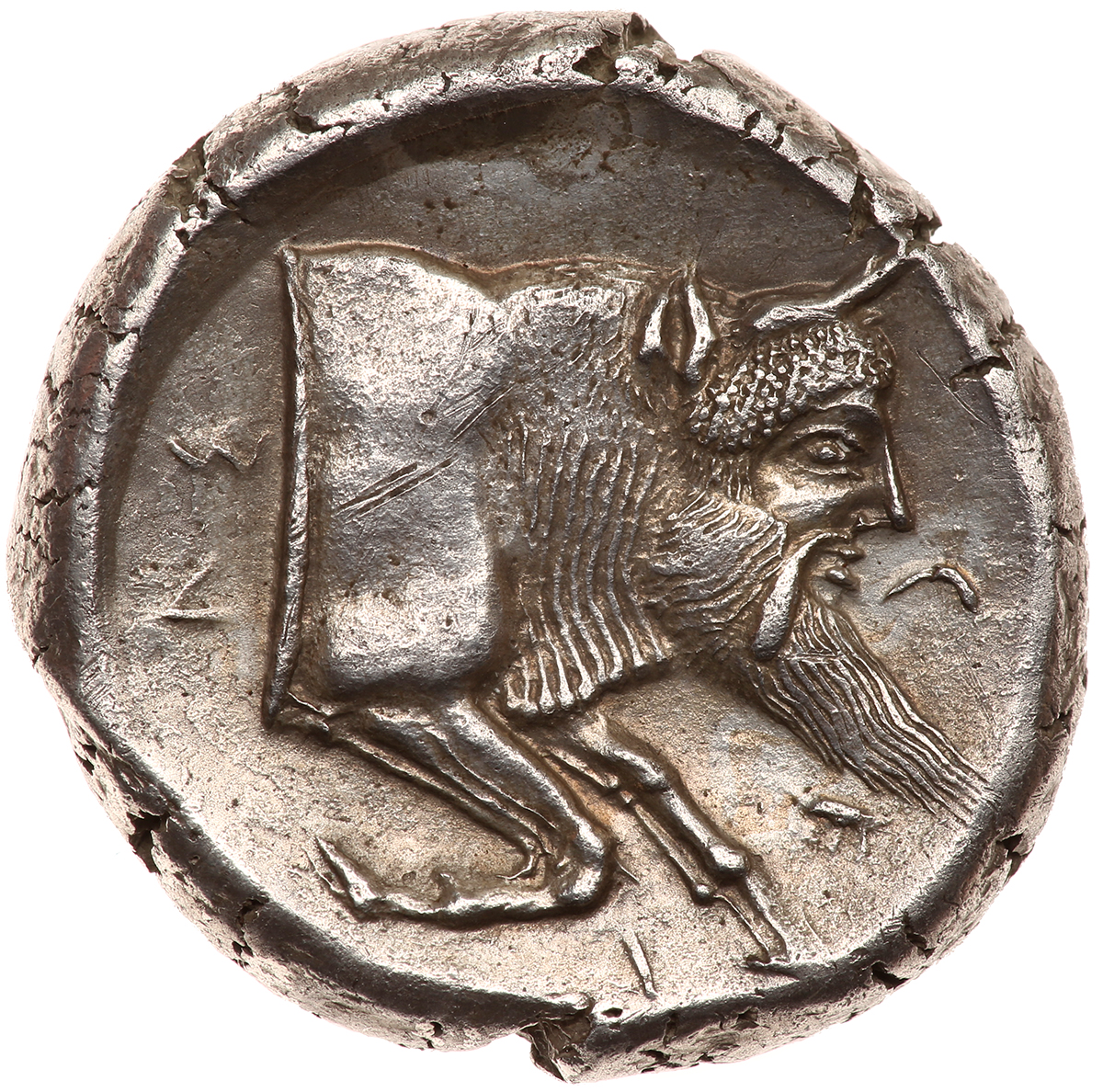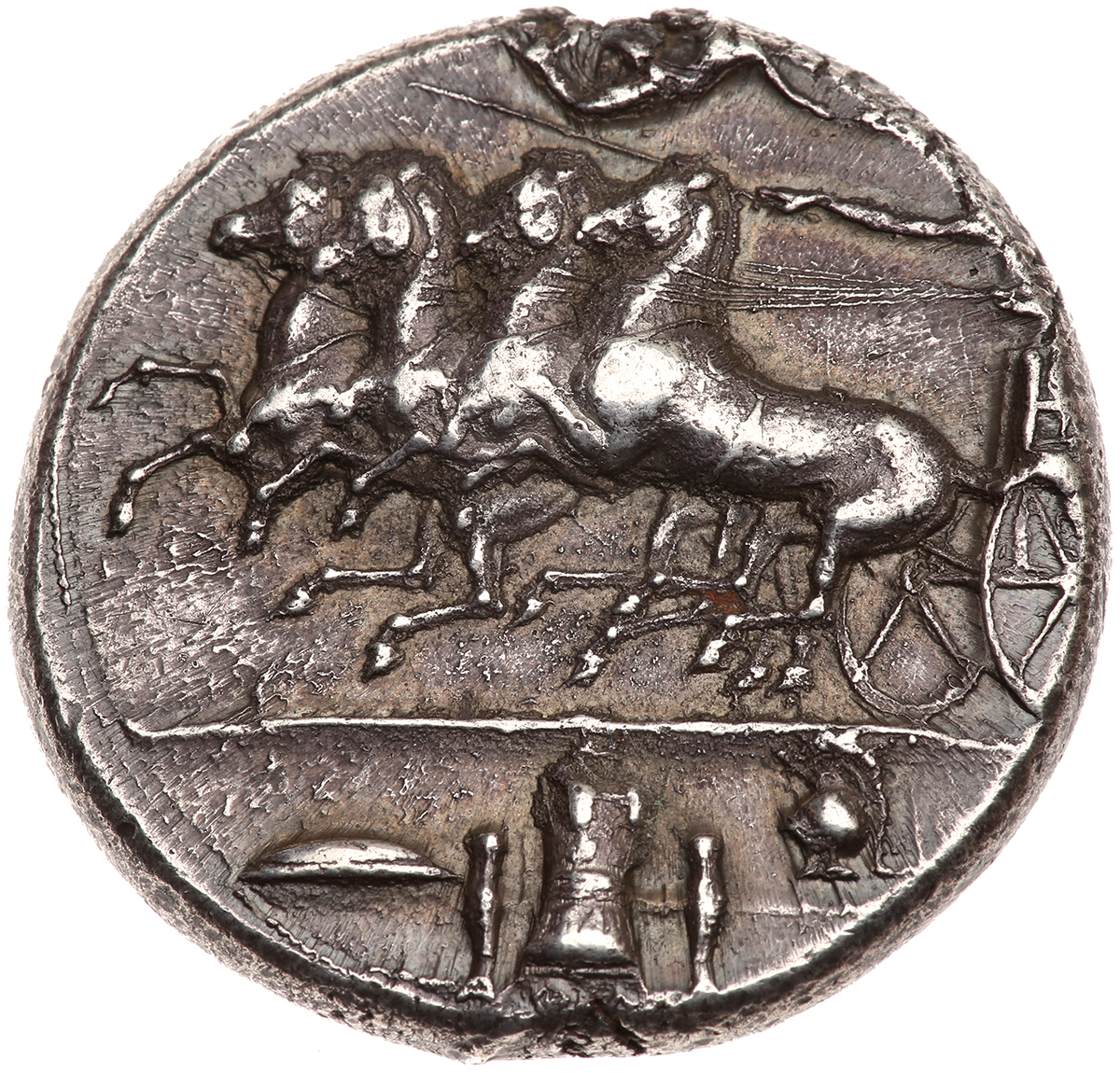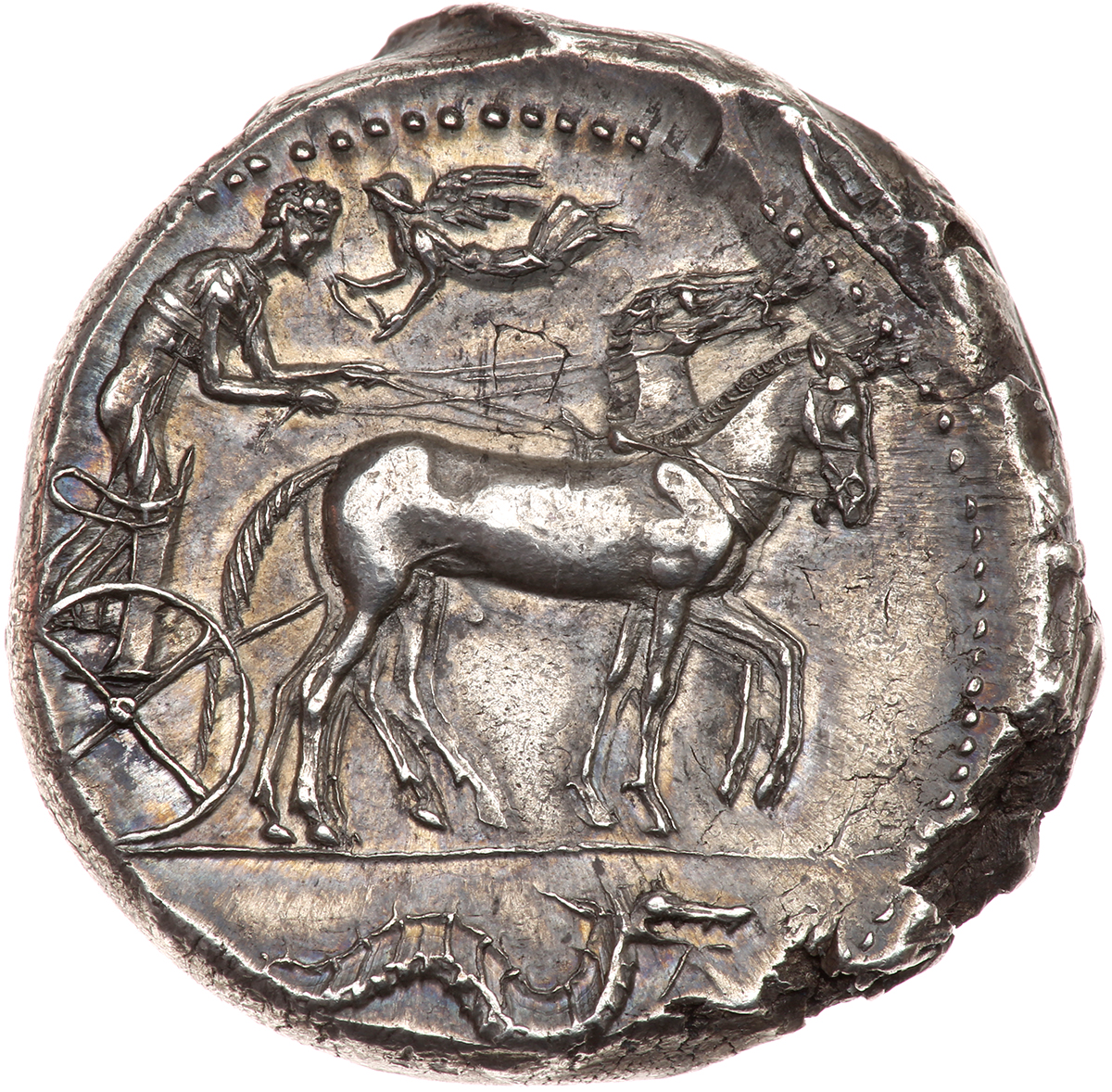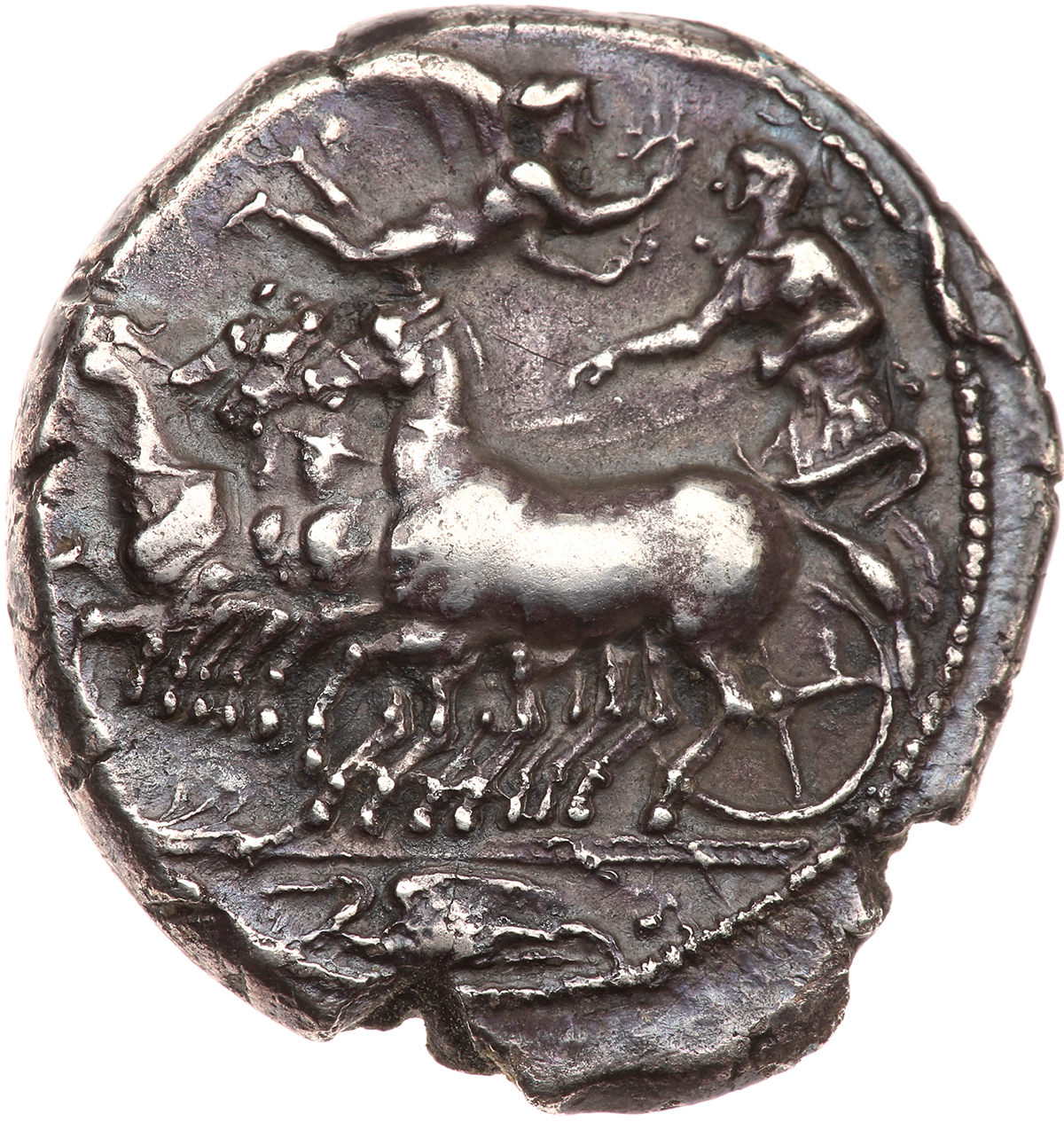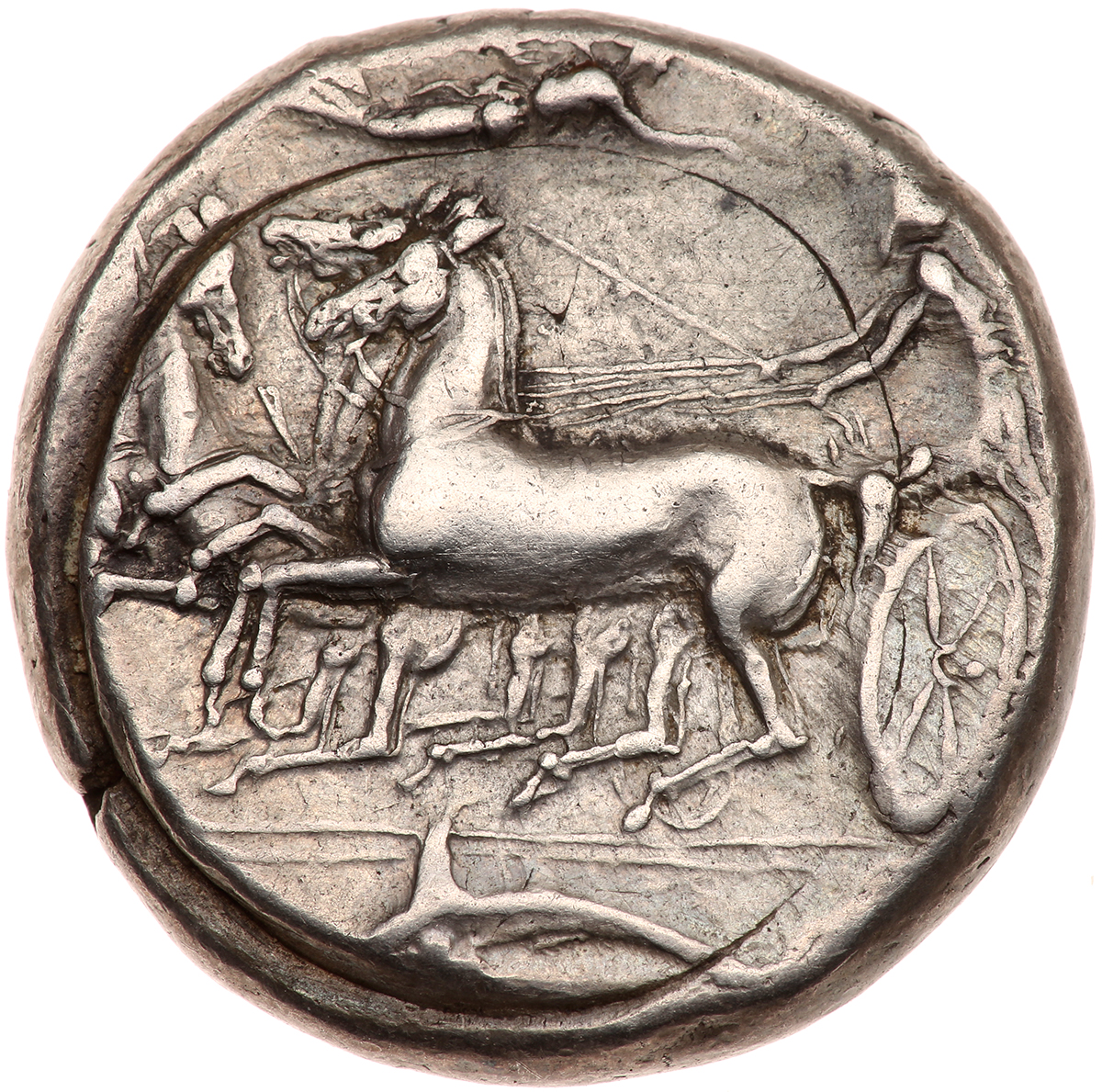By: Ira & Larry Goldberg Coins & Collectibles, Inc.
lot # 1717 - The Tom Peterson Collection of Ancient Greek Coins
Sicily, Gela. Silver Tetradrachm (17.22 g), ca. 480/75-475/0 BC Superb EF. Charioteer driving slow quadriga right; above, Nike flying right, crowning horses with wreath. Reverse: ?EΛAΣ, forepart of man-headed bull to right. Jenkins grp. II, 104 (O32/R59); Randazzo 19 (same dies); SNG ANS 22 (same dies); SNG Ashmolean 1727 (same dies); SNG Copenhagen 251 (same dies); Jameson 580 (same dies). Very Rare. Overstruck. An exceptional specimen. Superb Extremely Fine.
Founded by colonists from Rhodes and Crete in 688 BC, Gela was located on the south-eastern coastal plain of Sicily along the banks of the river Gela, from which it reaped a fertile soil and bountiful harvests. By the early fifth century, the wealth generated from its hinterland allowed the city's early tyrants to expand militarily at the expense of its neighbors, and Gela soon dominated several cities, amongst them Leontinoi, Naxos, Zankle-Messana and Syracuse. The tyrant Gelon, after conquering Syracuse, moved there, leaving his brother Hieron I in charge of Gela. After Gelon's death in 478 BC, Hieron took control of Syracuse and left the city of Gela to Polyzelos. Little is known of Polyzelos, but it was during his tyranny that the city began striking tetradrachms, replacing the earlier didrachms that had been the principal denomination in use at Gela. The charioteer on the obverse is copied from Syracuse, but shows the Charioteer of Delphi, one of the most well-known bronze statues from antiquity and which Polyzelos dedicated to Apollo of Delphi in order to celebrate the victory of his chariot in the Pythian Games of either 478 or 474. The reverse uses the type from the city's didrachm coinage, and depicts the forepart of the river-god Gelas. The immediate impression when first looking at this particular coin is that the detail is exceptional, and that the dies were engraved by a wonderfully skilled artist. Indeed, the dies used to strike this coin are the first of the series, so it stands to reason that the artist was perhaps contracted by Polyzalos himself, who sought out the finest masters in order to commemorate both his rule over his city and his Pythian victory with a new denomination. Estimated Value $5,000 - 6,000
Private purchase from Tom Cederlind.
Ira & Larry Goldberg Auctioneers
Ira and Larry Goldberg are experts in the Numismatic field with over 50 years of experience. In 2010, they were each awarded a Lifetime Achievement for their contributions to the Numismatic... Read More
Send Email to Ira & Larry Goldberg Coins & Collectibles, Inc. Or Visit WebSite


